The Most Common Eye Colors & The One Thing You Can Do To Make Them Stand Out
They say that the eyes are the windows to the soul, which is quite fitting, as no two pairs of eyes are exactly alike. In fact, this uniqueness is what makes eyes so beautiful, and eye color is a distinctive feature that people notice right away. While there can be different shades of eyes, the truth is that most of us are born with either blue or brown eyes. This is because the specific color of your eyes is determined by how much melanin, or pigment, your iris, the structure surrounding the pupil of your eye, has. How much brown or blue pigment you have is predetermined by a variety of genetic factors and develops over time to form one of the six most common eye colors: brown, hazel, amber, blue, green, and gray.
Your personal style, the right hair color and cut, and a complementary makeup look can really bring out your eye color and make them shine. Plus, each eye color is so uniquely created that learning more about it, the genetics behind its creation, and the health effects it can have on your eyes can help you truly embrace your eyes. So, let’s explore each of the most common eye colors and what you can do to make them really pop.
Brown Eyes
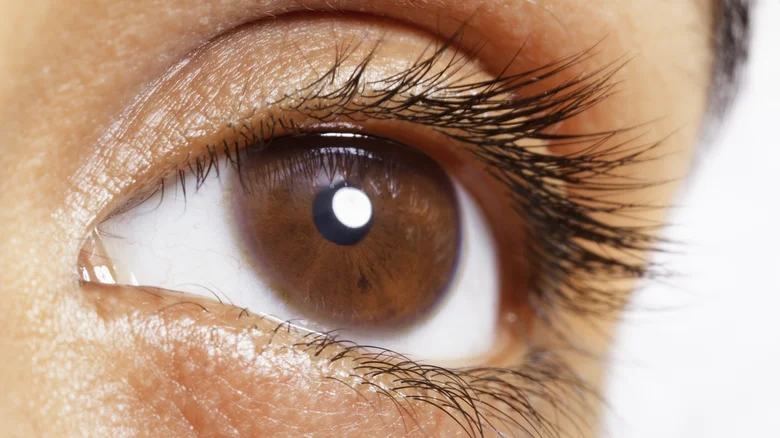
There are over 16 different genes that influence the color of our eyes. One of the most common eye colors is brown. Between 70% and 80% of people in the world have brown eyes. Scientifically, having brown eyes simply means that there is more melanin present in the iris of our eyes, giving it a dark brown color. The darkness or lightness of brown eyes also depends on how much light the concentration of melanin in the eyes allows in, as well as how it reflects this light outward. This is why there is such a diversity in the appearance of brown eyes.
Dark brown eyes are usually common in people with darker skin tones. This is because the melanin that determines skin color is the same type of melanin that is present in the eyes. In fact, brown eyes are more common in warmer regions that receive a lot of sunlight because higher amounts of melanin can protect the eyes from sunlight. This is why this eye color is especially common in South and East Asia and Africa.
Hazel Eyes
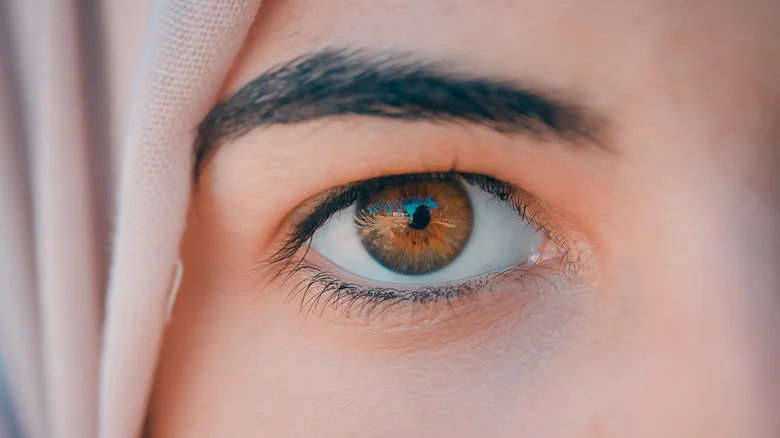
This complex eye color is the perfect blend of green and brown, making hazel eyes look like works of art. They are commonly referred to as light brown or honey-colored eyes. Babies born with blue eyes, over time, develop a small amount of melanin in their eyes which causes their blue eyes to become more of a greenish-brown mix, producing the appearance of hazel eyes that are not purely blue or brown.
Another reason hazel eyes appear that beautiful color is because of the way light disperses in the iris of hazel eyes. Often, you will see hazel eyes with a lighter inner part of the eye than the outer edges due to the way melanin disperses throughout hazel eyes, causing this light brown color with a green tint. Approximately 5% of the world has hazel eyes, making this eye color quite unique and most commonly found among people of European or Middle Eastern descent.
Amber Eyes
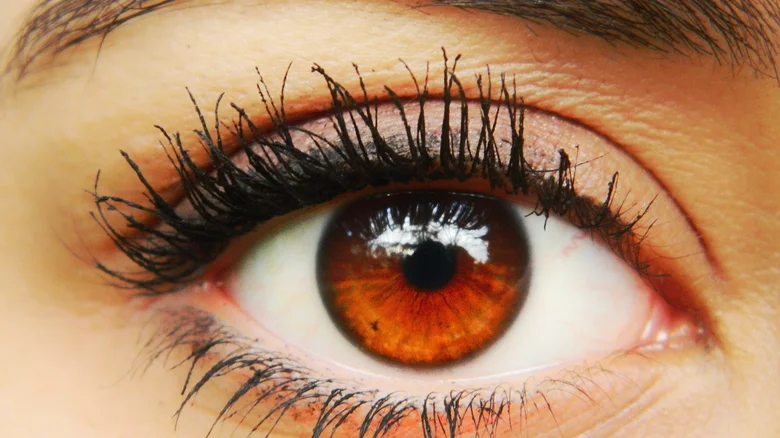
Amber eyes can be hard to spot, so it can be easy to confuse this color with hazel eyes. That’s why they’re often left off the list of eye colors. However, one way to spot amber eyes is to notice if the eyes appear more golden or even yellowish rather than tinged with brown and green flecks like hazel eyes. The amber color is a byproduct of a dark brown melanin mixing over time with another melanin, pheomelanin, which is a lighter red and yellow.
Yes, amber eyes are those perfect golden brown eyes that all the love songs are written about. These jewel-toned eyes have been a hit for decades because of their rarity—they occur in about 5% of the world’s population and are especially common among people of Asian, Spanish, and South African descent. Popular celebrities like Justin Bieber, Jennifer Lopez, and Nichole Richie have amber eyes.
Blue Eyes
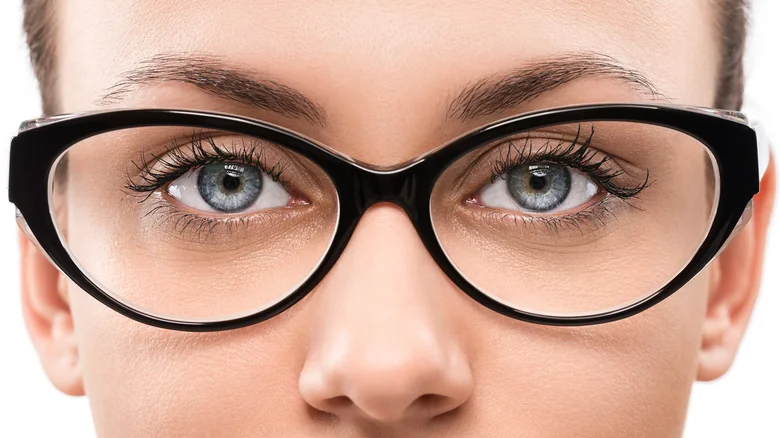
This eye color may seem common, but it’s actually rarer than we think. Only about 8% of the world’s population has blue eyes. Although babies are born with either blue or brown eyes, blue eyes are rarer because they’re a recessive trait.
While blue eyes come in many different shades, there’s no blue pigment present in blue eyes. Instead, eyes get their blue hue based on how much light enters and reflects off the iris. This is why blue eyes can look very different depending on the lighting. Since this eye color has less melanin than darker eyes, it’s also more important to wear sunglasses or goggles, as blue eyes can be sensitive to light.
Research from the University of Copenhagen published in 2008 shows that all of us lucky enough to have blue eyes could have a single common ancestor who lived between 6,000 and 10,000 years ago (via Science Daily). Research suggests that humans were likely born with exclusively brown eyes until a genetic mutation occurred that caused a distant ancestor to have blue eyes. This event led to the birth and spread of blue eyes. Today, this eye color is especially common in northern Europe.
Heterochromatic Eyes
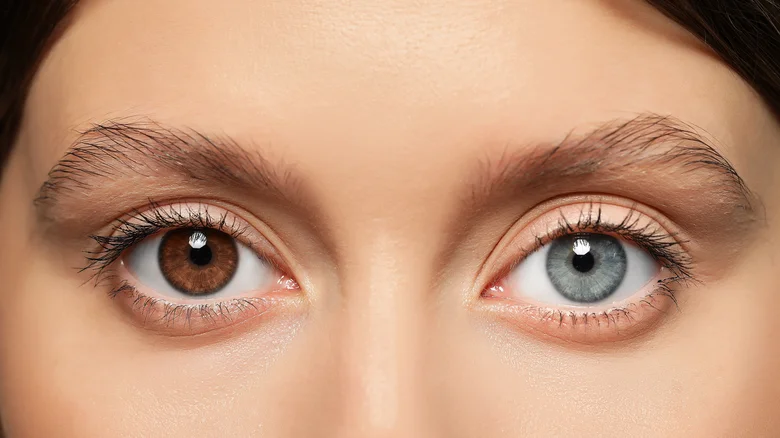
It is possible to have a different eye color in each eye, which is called heterochromia. This is a genetic mutation that occurs due to a different distribution of melanin in each eye. Although it usually does not affect the ability to see, it can be present at birth or people can develop it over time as a symptom of another condition, which can include an eye injury.
What makes heterochromia so unique is that, like typical eye colors, it can also present itself in many different ways. For example, you can have two completely different eye colors, such as one eye brown and the other green, which is called complete heterochromia. This is different from central heterochromia, where both eyes are one color near the pupil and then change to a completely different color toward the edge, or you can have partial heterochromia, where the eyes have uneven distributions of two colors in one or both eyes. The good news about having different eye colors is that you can try different makeup looks to complement each eye and mix and match various styles.